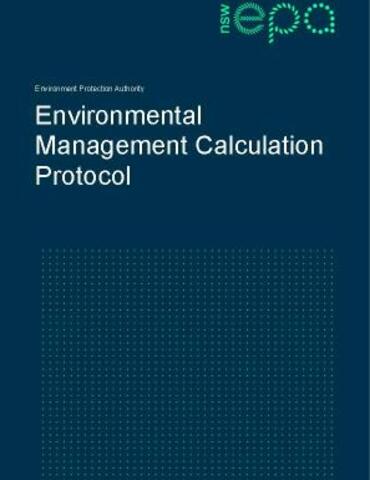Environmental Management Calculation Protocol
Information about the Environmental Calculation Protocol.
The Environmental Management Calculation Protocol (PDF 348KB) sets out the matters and methods the EPA uses to determine the environmental management category allocated to holders of licences issued under the Protection of the Environment Operations Act 1997 Protection of the Environment Operations Act 1997.
Environmental management category
The environmental management category is informed by the environmental management performance of the licensee.
The EPA takes into account
- a licensee's environmental performance based on their compliance history and regulatory actions the EPA has taken to respond to any incidents and non-compliances
- environmental management systems and practices the licensee has in place to control and mitigate environmental risks associated with their licensed activities
- environmental improvement programs initiated by the licensee
The trend in EPA regulatory actions and a licensee's performance over a three-year period is also considered in the determination of the environmental management category.
Based on this assessment, each licensee is allocated an environmental management category of either A, B, C, D or E.
Environment protection licence administrative fees
Licence administrative fees are calculated based on the type of activities being undertaken (fee-based activities), the scale of these activities, and the licensee's environmental management category.
Each environmental management category corresponds with an environmental management factor. These are listed in clause 10 of the Protection of the Environment (General) Regulation 2009. The environmental management factor acts as a multiplier to the administrative fee, resulting in a decrease, increase or no change to the licence administrative fee.
Environmental management categories and corresponding environmental management factors
| Environmental management category | Environmental management factor |
|---|---|
| A | 0.95 |
| B | 1 |
| C | 1.3 |
| D | 1.6 |
| E | 2 |
Licensees who perform well and minimise their environmental risk are rewarded with a reduction of administrative fees. Whereas poor performing licensees pay licence fees that provide an incentive to improve their performance.
Environmental Management Systems, Practices and Improvements
The Risk-based licensing: environmental systems, practices and improvements (PDF 294KB) guidance outlines the environmental management systems and practices and the environmental improvement programs under risk-based licensing.
The Environmental Management Systems Guidelines (PDF 223KB) have been developed to assist holders of environment protection licences to answer questions relating to environmental management systems in the annual return for their licence. This guidance document should be read in conjunction with the Environmental Management Calculation Protocol.
The Guidelines provide guidance for licensees who have a certified Environmental Management System (EMS) and guidance for licensees who do not have a certified EMS but have EMS practices in place. The guidelines clarify the evidence and information the EPA expects a licensee to hold (and make available to the EPA when asked) where a certified EMS or EMS practices are being claimed under the risk-based licensing system.
It is important to note that it is an offence to supply any information to the EPA in the Annual Return that is false or misleading in a material respect, or to certify a statement that is false or misleading in a material respect. There is a maximum penalty of $250,000 for a corporation or $120,000 for an individual.
Download

Environmental Management Calculation Protocol Environmental Management Calculation Protocol
